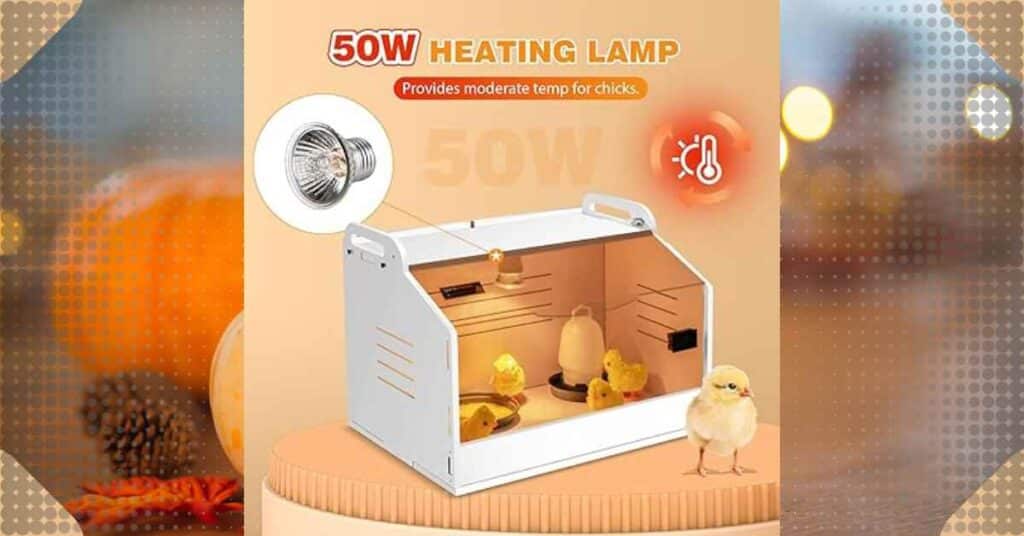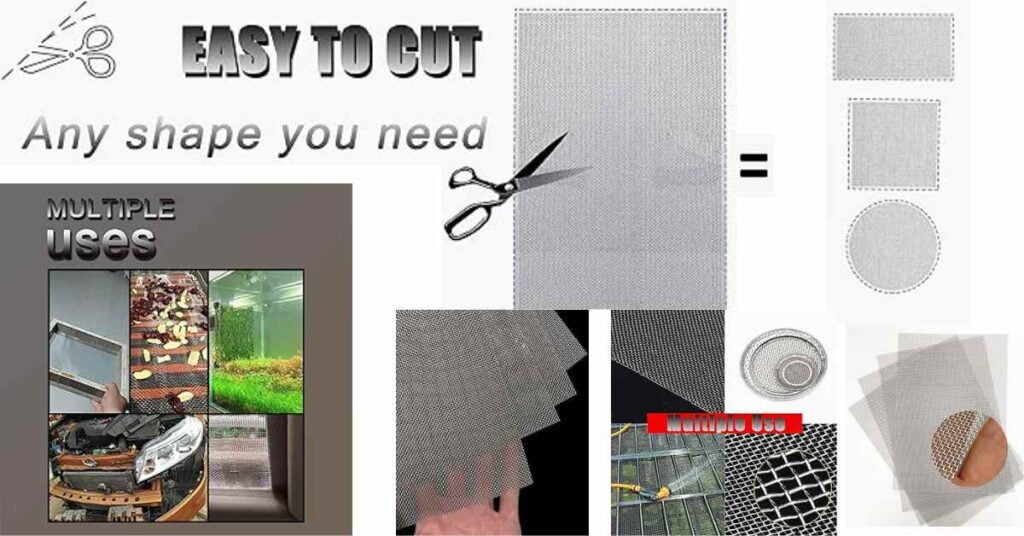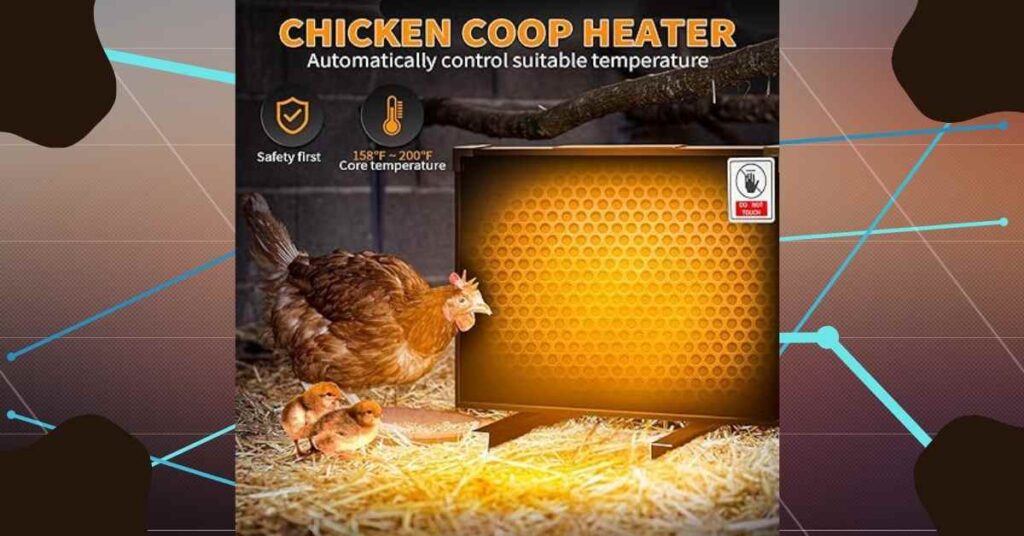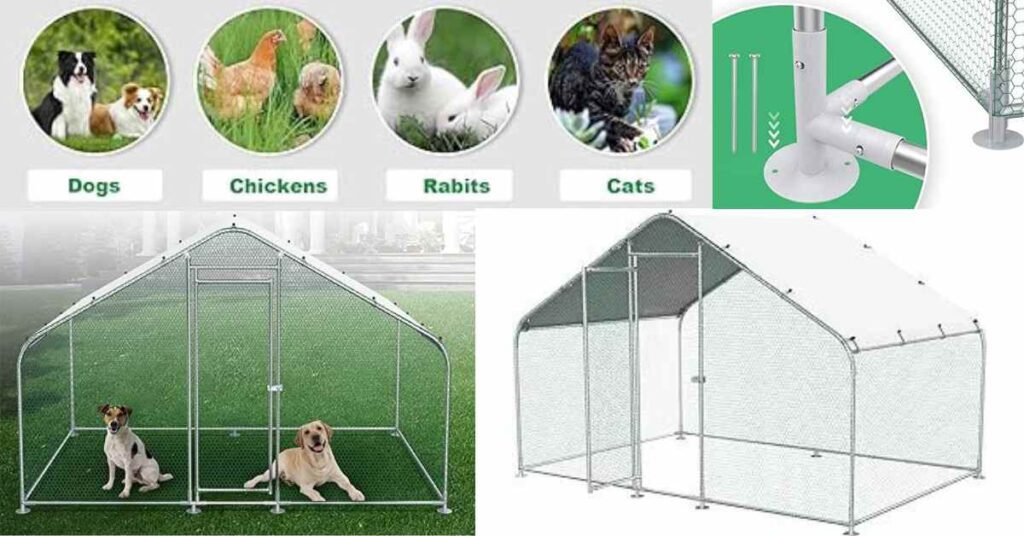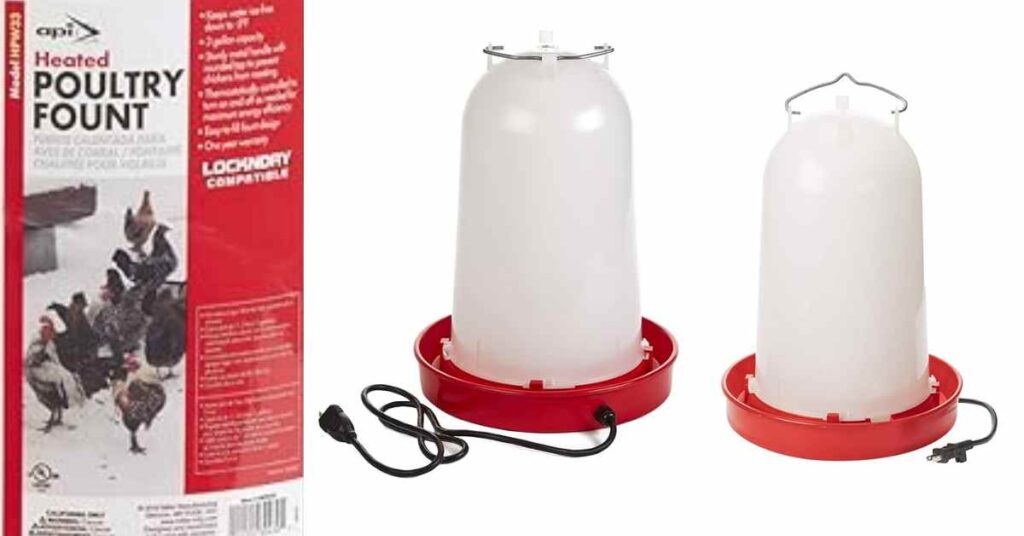Incubator Magic: A Guide to Successful Chicken Egg Hatching!
Table of Contents
Section I: Introduction

Welcome to the world of chicken egg incubation, where the art of hatching meets the mastery of success! Whether you’re a seasoned poultry enthusiast or just starting your flock, understanding the nuances of egg incubation is crucial for a successful hatch.
In this guide, we will walk you through the essential steps of choosing the perfect incubator, setting up your incubation environment, and mastering the 21-day journey from setting eggs to welcoming adorable baby chicks.
Get ready to embark on a fascinating adventure into the incubation realm, where each step brings you closer to hatching success. Let’s crack open the secrets of chicken egg incubators and pave your way to becoming a hatchery expert!
Section II: Choosing the Right Incubator
Step 1: How Large Should Your Incubator Be?
Selecting the right-sized incubator is crucial for a successful hatching experience. Consider the space available and the number of eggs you intend to hatch. Smaller incubators are suitable for hobbyists, while larger ones cater to those with a more extensive flock. Strike a balance to ensure optimal conditions for egg development.
Step 2: Where Will You Keep Your Incubator?
Choose a location with stable temperature and minimal disturbances. Avoid areas with direct sunlight or drafts, as they can affect temperature regulation. Placing the incubator in a quiet, controlled environment enhances the chances of a successful hatch.
Step 3: How Much Can You See?
Opt for an incubator with clear visibility features. Transparent walls or viewing windows allow you to monitor the eggs without disrupting the internal environment. This visual access is essential for observing egg development during the incubation period.
Step 4: How Easy is the Incubator to Clean?
Maintaining a clean environment is crucial for successful incubation. Look for incubators with easy-to-clean surfaces and removable trays. Regular cleaning prevents the buildup of bacteria and ensures a healthy environment for developing embryos.
Step 5: How Do You Want to Measure Temperature and Humidity?
Accurate temperature and humidity control are key factors in successful egg incubation. Choose an incubator with reliable sensors and controls. Some models offer digital displays, making it easier to monitor and adjust conditions for optimal hatching.
Step 6: How Do You Want to Control Humidity?
Humidity plays a vital role in egg development. Select an incubator with precise humidity control features. This ensures that the moisture levels are maintained at the ideal range, creating a conducive environment for successful hatching.
Step 7: What About Turning the Eggs?
Egg turning is a critical aspect of incubation. Consider whether you prefer manual or automatic egg turning. Automatic turning systems reduce the risk of human error and ensure that eggs receive consistent rotation, promoting even development.
Step 8: Counting Down the Days
Choose an incubator with a reliable countdown or day counter feature. This helps you keep track of the incubation progress and anticipate the hatching day. Being aware of the timeline ensures that you’re prepared for the final stages of the incubation process.
Step 9: Manual, Automatic, or In-Between?
Decide on the level of automation you’re comfortable with. Manual incubators require more hands-on involvement, while automatic models offer convenience but might come at a higher cost. Consider your preferences and experience level when making this decision.
Ten Steps to Selecting the Ideal Incubator for Chicken Eggs
In conclusion, the key to successful egg incubation begins with choosing the right incubator. By following these ten steps, you’ll be well on your way to creating an ideal environment for hatching success. Join us in the next section as we delve into the fascinating world of hatching eggs at home, starting with considerations for those contemplating the joys of raising chickens.
Section III: Hatching Eggs at Home: A 21-Day Guide for Baby Chicks


Starting a Flock: Considering Chickens
Before diving into the intricacies of incubation, it’s essential to consider the prospect of raising chickens. Assess your local regulations, available space, and the commitment required for poultry care. Starting a flock is a rewarding venture, and understanding your commitment level ensures a positive experience for both you and your future feathered friends.
Starting a Flock: Caring for Chicks
If you’re new to poultry keeping, caring for chicks requires attention to detail. Prepare a brooder space with sufficient warmth, bedding, and a reliable heat source. Provide a balanced chick starter feed and clean water. Understanding the basics of chick care sets the foundation for a successful transition from egg to adorable, chirping companions.
Prior to Incubating Chicken Eggs: Secure Fertile Eggs and Chick Starter Feed
Begin your egg incubation journey by sourcing fertile eggs from reputable sources. Ensure the eggs are fresh and clean, as cleanliness is paramount for successful incubation. Additionally, acquire a quality chick starter feed, essential for nourishing the chicks once they hatch. Set the stage for success by starting with high-quality inputs.
How to Set Up the Egg Incubator
Creating the right environment within the egg incubator is crucial for successful hatching. Follow these steps:
Clean the Incubator: Thoroughly clean and disinfect the incubator to eliminate any potential contaminants.
Check Equipment: Ensure all incubator components, such as the heating element and fans, are functioning properly.
Add Water: Fill the incubator’s water reservoir to establish the necessary humidity level for egg development.
Preheat the Incubator: Allow the incubator to stabilize at the recommended temperature before placing the eggs.
Day 1: Setting Eggs
On the first day of incubation, carefully place the selected eggs in the incubator’s designated slots. Ensure they are positioned with the pointed ends slightly downward. Proper placement promotes optimal air cell development and enhances the chances of successful hatching.
Day 1-18: Turning the Eggs
Egg turning is critical during the first 18 days of incubation. Turn the eggs at least three times a day to prevent the embryos from sticking to the inner membrane. Automatic turning mechanisms in modern incubators simplify this process, ensuring consistent rotation.
Days 7-10: Candling Eggs
Candling involves shining a light through the egg to observe embryo development. Perform candling around days 7-10 to check for viable embryos and identify potential issues. Remove any eggs that show signs of infertility or abnormalities to maintain a healthy incubation environment.
Days 18-21: Pre-Hatching
As the incubation period nears completion, reduce egg turning and increase humidity to prepare for hatching. Monitor the eggs closely for any signs of pipping, the initial cracks made by chicks breaking through their shells.
Day 21: Baby Chicks Start Hatching
The culmination of the incubation process is the emergence of baby chicks. Witness the miraculous moment as chicks break free from their shells and enter the world. Provide a warm and secure environment within the incubator until the chicks are strong enough to transfer to the brooder.
Keep Reading for a Step-by-Step Guide to Hatching Eggs at Home
This section has laid the groundwork for successfully incubating chicken eggs. In the next part, we’ll delve into a step-by-step guide for each day of the 21-day incubation process. Get ready to witness the marvel of life as we guide you through the final stages of hatching and caring for your newly hatched chicks.
Section IV: Chicken Incubator: Everything You Need to Know to Master the Hatch
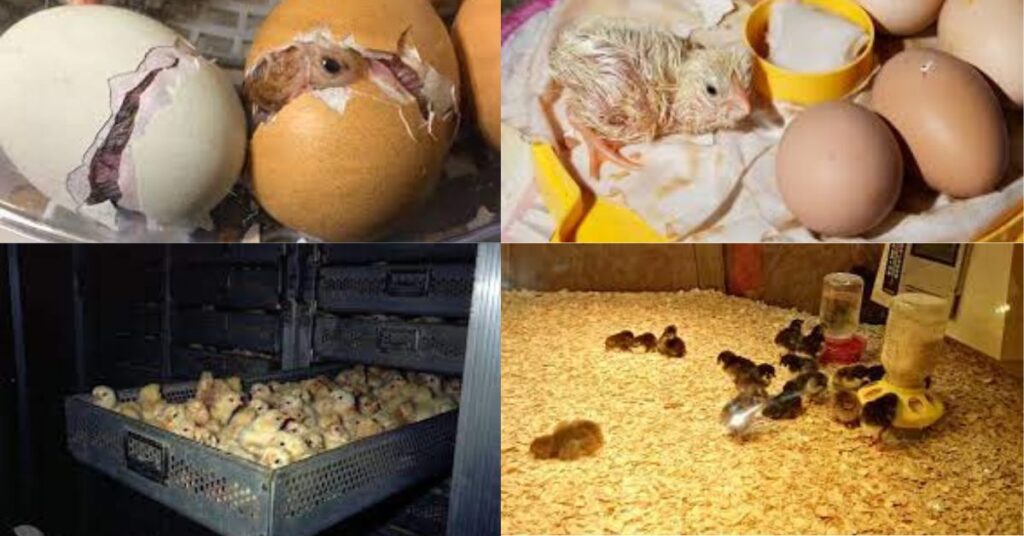

Types of Incubators
Embarking on the journey of mastering the hatch involves understanding the different types of incubators available. Here, we explore two primary types:
Forced Air Incubators
Functionality: Equipped with a fan for consistent air circulation.
Advantages: Maintains uniform temperature throughout the incubator.
Considerations: Requires careful placement of eggs to avoid direct airflow.
Still Air Incubators
Functionality: Relies on natural air convection for temperature control.
Advantages: Simplicity and lower energy consumption.
Considerations: Requires strategic positioning of eggs for even heating.
Features to Look For
Temperature Control
Precision: Opt for incubators with accurate temperature controls.
Digital Displays: Models with digital displays facilitate easy monitoring and adjustments.
Humidity Management
Control Mechanisms: Choose incubators with reliable humidity control features.
Clear Displays: Transparent humidity displays simplify monitoring.
Setting Up Your Incubator
Location
Stability: Place the incubator in a stable environment with minimal temperature fluctuations.
Avoidance: Keep away from direct sunlight, drafts, and areas prone to vibrations.
Calibration
Accuracy: Calibrate temperature and humidity controls to ensure accuracy.
Regular Checks: Periodically recalibrate the incubator to maintain precision.
Egg Selection
Quality Criteria
Freshness: Select fresh, clean eggs from healthy chickens.
Size and Shape: Choose eggs of uniform size and avoid irregularities.
Storage Conditions
Temperature: Store eggs in a cool, dark place.
Rotation: Gently rotate eggs daily before incubation to prevent settling.
The Incubation Process
Daily Monitoring
Consistency: Monitor temperature and humidity daily for consistency.
Adjustments: Make necessary adjustments to maintain optimal conditions.
Rotation Needs
Frequency: Turn eggs at least three times a day.
Automation: Consider automatic turning mechanisms for convenience.
Troubleshooting
Fluctuating Conditions
Causes: Identify and address factors causing temperature and humidity fluctuations.
Stability: Ensure a stable environment for successful incubation.
Egg Mortality
Candling: Regularly candle eggs to identify and remove non-viable ones.
Sanitation: To lower the chance of contamination, keep the area tidy.
Hatch Day
Signs of Imminent Hatching
Pipping: Watch for small cracks (pipping) on the eggshells.
Vocalization: Chirping sounds indicate chicks are ready to hatch.
Post-Hatch Care
Warmth: Keep chicks in the incubator until they are fully dry and fluffed.
Transfer: Move chicks to a brooder with proper heat sources and chick feed.
Record-Keeping
Data Points
Temperature Logs: Maintain a record of daily temperature and humidity readings.
Observations: Document egg candling results and any observations.
Analysis
Patterns: Analyze data to identify patterns or irregularities.
Adjustments: Use insights to refine incubation processes for future hatches.
Cleaning and Maintenance
Between Cycles
Thorough Cleaning: Disassemble and clean the incubator between each cycle.
Disinfection: Use safe disinfectants to eliminate potential contaminants.
Seasonal Checks
Preparation: Before each season, inspect and test the incubator.
Calibration: Ensure all controls are calibrated for optimal performance.
Advanced Techniques
Staggered Hatching
Benefits: Allows for continuous egg incubation and reduces the risk of overcrowding.
Separation: Use dividers to create sections with different hatch dates.
Dual-Species Incubation
Compatibility: Consider incubators designed for multiple poultry species.
Adjustments: Adapt settings for temperature, humidity, and turning based on species.
ROI Considerations
Energy Costs
Efficiency: Invest in energy-efficient models to minimize operational costs.
Long-Term Savings: Consider upfront costs against potential long-term energy savings.
Hatch Rates
Evaluation: Assess hatch rates and adjust incubation processes accordingly.
Quality Control: Monitor the health and vigor of hatched chicks.
Legal Considerations
Permits
Regulatory Compliance: Check local regulations regarding egg incubation and chick sales.
Permit Acquisition: Obtain necessary permits for legal compliance.
Sale of Chicks
Ethical Practices: Adhere to ethical practices in selling chicks.
Documentation: Keep records of sales transactions and provide appropriate documentation.
Future Technologies
IoT in Incubation
Monitoring: Explore incubators with Internet of Things (IoT) capabilities for remote monitoring.
Automation: Utilize smart features for automated controls and notifications.
AI Monitoring
Precision: Incorporate Artificial Intelligence (AI) for advanced monitoring and control.
Data Analysis: Allow AI algorithms to analyze data for predictive insights.
Section V: S-Line Incubators
Benefits
Precision Temperature Control
S-Line Incubators are renowned for their precision in temperature regulation. Equipped with advanced sensors and controls, these incubators ensure a stable and optimal environment for the development of eggs. This precise temperature control is crucial for successful incubation and hatching.
Energy Efficiency
Efficiency is a key advantage of S-Line Incubators. Designed with energy-saving features, these incubators minimize power consumption without compromising on performance. This not only reduces operational costs but also aligns with sustainable and eco-friendly practices.
Enhanced Humidity Management
S-Line Incubators excel in humidity management, a critical factor in egg incubation. With sophisticated humidity control mechanisms, these incubators provide a conducive atmosphere for the eggs, promoting healthy embryo development and hatch rates.
User-Friendly Interface
Navigating through the incubation process is made easier with the user-friendly interface of S-Line Incubators. Intuitive controls and digital displays ensure that even novice hatchers can operate the incubator effectively. The user experience is improved overall by this simplicity.
Technical Specifications
Temperature Range
S-Line Incubators typically offer a precise temperature range suitable for various poultry species. The adjustable temperature settings allow hatchers to create the ideal conditions for different stages of incubation.
Humidity Settings
These incubators come equipped with humidity controls that can be fine-tuned to meet the specific requirements of different eggs. The ability to adjust humidity levels ensures optimal conditions for successful hatching.
Capacity
S-Line Incubators come in a range of sizes to accommodate different batch sizes. Whether you’re a hobbyist or a commercial breeder, there’s an S-Line Incubator with the right capacity to suit your needs.
Automatic Turning Systems
Many S-Line Incubators feature automatic egg turning systems. This automation reduces the need for manual intervention, ensuring that eggs receive consistent rotation throughout the incubation period. Automatic turning contributes to higher hatch rates and healthier chicks.
Built-In Alarms
To enhance the safety and success of the incubation process, S-Line Incubators often include built-in alarms. These alarms can notify hatchers of deviations in temperature or humidity, allowing for prompt adjustments and preventing potential issues.
Construction Material
S-Line Incubators are constructed with durable and heat-retaining materials. This not only ensures the longevity of the incubator but also contributes to stable temperature conditions within the unit.
Ventilation System
Efficient ventilation is a hallmark of S-Line Incubators. The inclusion of well-designed ventilation systems helps maintain fresh air circulation, preventing the buildup of stale air and promoting a healthy environment for developing embryos.
Tunnel Type Egg Incubators
In addition to S-Line Incubators, tunnel type egg incubators offer unique features for hatchery success. These incubators are designed for large-scale operations, providing a controlled and efficient environment for incubating a significant number of eggs.
CO2 Control System
Tunnel type egg incubators often integrate CO2 control systems. These systems monitor and regulate carbon dioxide levels within the incubator, ensuring optimal air quality for developing embryos. This advanced feature contributes to higher hatch rates and healthier chicks.
Box Type Egg Incubator
Box type egg incubators, on the other hand, offer a compact and versatile solution for smaller-scale hatcheries or hobbyists. These incubators are known for their simplicity and ease of use, making them suitable for those new to egg incubation.
Egg Tray and Trolley
Both tunnel type and box type egg incubators typically come with specially designed egg trays and trolleys. These components facilitate efficient egg handling, loading, and unloading, streamlining the incubation process and reducing the risk of damage to delicate eggs.
As we explore the benefits and technical specifications of S-Line Incubators, it becomes evident that choosing the right type of incubator is a crucial decision in mastering the hatch. In the following section, we’ll delve into the specific features of CO2 control systems and box type egg incubators, offering valuable insights for hatchery enthusiasts at every level.
Section VI: CO2 Control Systems in Egg Incubators
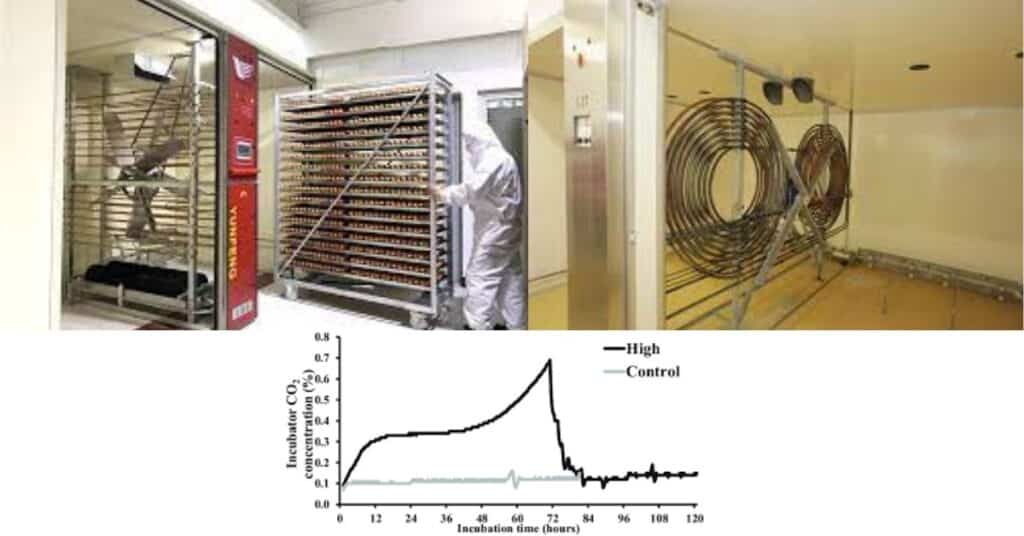

Importance of CO2 Control
Maintaining optimal carbon dioxide (CO2) levels is a critical aspect of egg incubation. CO2 control systems in egg incubators play a pivotal role in ensuring a healthy and conducive environment for developing embryos. Here’s why CO2 control is essential:
1. Respiratory Health of Embryos
Excessive CO2 levels can negatively impact the respiratory health of developing embryos. Proper control helps prevent the accumulation of carbon dioxide within the incubator, ensuring a supply of fresh air for the embryos to breathe.
2. Preventing Respiratory Acidosis
Respiratory acidosis, caused by elevated CO2 levels, can harm the embryos and lead to developmental issues. CO2 control systems actively monitor and adjust the CO2 concentration, preventing respiratory acidosis and promoting optimal conditions for embryonic growth.
3. Hatch Rate Optimization
Precise CO2 control contributes to higher hatch rates. Embryos exposed to controlled CO2 levels experience less stress, resulting in healthier chicks upon hatching. This optimization is crucial for the success of hatchery operations.
Features of CO2 Control Systems
1. Continuous Monitoring
CO2 control systems feature continuous monitoring capabilities. Advanced sensors constantly assess the CO2 levels within the incubator, providing real-time data for hatchery operators. This allows for immediate adjustments to maintain an ideal environment.
2. Automatic Adjustment
Equipped with automatic adjustment mechanisms, CO2 control systems can regulate the influx of fresh air or the removal of stale air as needed. This automation ensures that CO2 levels remain within the desired range without manual intervention.
3. Integration with Ventilation Systems
CO2 control systems are often integrated with the overall ventilation system of the incubator. This integration allows for seamless coordination, ensuring that the ventilation system responds appropriately to maintain optimal CO2 levels.
4. Alarms for Deviations
To enhance safety and hatchery success, CO2 control systems include alarms for deviations. If CO2 levels exceed or fall below set parameters, the system triggers alarms to alert operators. This early notification enables quick corrective actions.
Box Type Egg Incubator: Compact and Efficient
Box type egg incubators offer a practical and compact solution for hatchery enthusiasts, particularly those with smaller-scale operations. Here are key features of box type egg incubators:
1. User-Friendly Design
Designed with simplicity in mind, box type egg incubators are user-friendly and suitable for beginners. Easy-to-understand controls, straightforward interfaces, and minimal setup requirements make these incubators accessible to a wide range of hatchery enthusiasts.
2. Space-Efficient
The compact size of box type egg incubators makes them space-efficient. Whether you have limited space or prefer a portable incubator, these models are versatile and can fit into various settings, including homes and small hatcheries.
3. Suitable for Varied Egg Sizes
Box type egg incubators often come with adjustable trays, accommodating eggs of different sizes. This versatility allows hatchery operators to incubate a variety of poultry species without the need for multiple incubators.
4. Cost-Effective Solution
For those on a budget or looking for a cost-effective incubation solution, box type egg incubators offer an affordable option. Despite their compact size, they provide the essential features needed for successful egg incubation.
Egg Tray and Trolley for Efficient Handling
Efficient egg handling is crucial for the success of egg incubation. Egg trays and trolleys are integral components of incubators, facilitating the loading, unloading, and movement of eggs within the incubation environment.
1. Specialized Egg Trays
Egg trays are designed with precision to cradle and secure eggs during incubation. They come in various configurations to accommodate different egg sizes and ensure optimal positioning for uniform heat distribution.
2. Trolleys for Convenience
Trolleys provide a convenient means of transporting egg trays within the hatchery. They are designed for easy maneuverability, allowing hatchery operators to load and unload eggs efficiently. Trolleys contribute to streamlined incubation processes.
As we conclude our exploration of CO2 control systems, box type egg incubators, and the significance of efficient egg handling, it’s evident that these components play crucial roles in the success of egg incubation. In the next section, we will shift our focus to the broader concept of incubation equipment, covering additional features and considerations for hatchery enthusiasts.
Section VII: Incubation Equipment: Enhancing Efficiency and Success


Advanced Features in Modern Incubators
1. Automatic Egg Turner
Modern incubators often come equipped with automatic egg turning systems. This feature mimics the natural behavior of parent birds, ensuring that developing embryos receive consistent rotation. Automatic egg turners contribute to higher hatch rates and healthier chicks.
2. LED Egg Candler
LED egg candlers provide a powerful and focused light source for examining developing embryos during the candling process. The clarity offered by LED technology enhances visibility, allowing hatchery operators to make accurate assessments of egg viability.
3. Digital Displays
Incubators with digital displays offer precise monitoring of temperature, humidity, and other essential parameters. These displays provide real-time information, enabling hatchery operators to make immediate adjustments for optimal incubation conditions.
4. Humidity Control Systems
Humidity control systems in modern incubators ensure a stable and controlled environment for egg incubation. These systems allow operators to adjust humidity levels based on the specific requirements of different poultry species, contributing to successful hatch rates.
Importance of Ventilation Systems
1. Oxygen Supply
Efficient ventilation systems supply a continuous flow of fresh oxygen to developing embryos. Adequate oxygen is vital for the growth and development of embryos, and well-designed ventilation prevents the buildup of stale air within the incubator.
2. Carbon Dioxide Removal
Ventilation systems play a key role in removing carbon dioxide produced by developing embryos. Proper CO2 removal prevents the accumulation of this gas, maintaining a healthy and conducive environment for embryonic growth.
3. Prevention of Fungal Growth
Good ventilation helps prevent the growth of fungi and molds within the incubator. Stagnant air can create conditions conducive to fungal development, which can be detrimental to both embryo health and hatchery hygiene.
Selecting the Right Incubator
1. Size and Capacity
Consider the size of your hatchery operation and the number of eggs you plan to incubate. Choose an incubator with the appropriate capacity to accommodate your needs, whether you are a small-scale hobbyist or a commercial breeder.
2. Temperature and Humidity Controls
Ensure that the chosen incubator provides accurate and adjustable controls for temperature and humidity. These factors are critical for the success of egg incubation, and precise control contributes to higher hatch rates.
3. Energy Efficiency
Select an incubator with energy-efficient features to minimize operational costs. Look for models that are designed to conserve energy without compromising on performance, promoting sustainable and cost-effective hatchery practices.
4. Ease of Cleaning and Maintenance
Efficient cleaning and maintenance are essential for the hygiene of the incubation environment. Choose an incubator with components that are easy to disassemble and clean between incubation cycles. Equipment lifespan is ensured by routine maintenance.
Section VIII: Conclusion
In conclusion, navigating the intricate world of egg incubation is a journey that demands a nuanced understanding of diverse incubator types, advanced features, and strategic hatchery management. From the precision of S-Line Incubators to the significance of CO2 control systems, each facet contributes to the overall success of hatching endeavors.
The integration of modern technologies, such as automatic egg turners, LED egg candlers, and digital displays, enhances the efficiency and precision of the incubation process. Ventilation systems play a crucial role in maintaining optimal conditions, ensuring a continuous supply of fresh air and the removal of potentially harmful gases.
Selecting the right incubator, with attention to size, temperature control, and energy efficiency, is pivotal for achieving high hatch rates. As hatchery operators embark on the path to mastery, this comprehensive guide equips them with the knowledge and insights needed to elevate their egg incubation skills and foster the healthy development of future flocks. May your incubation endeavors be marked by thriving chicks, successful hatches, and the fulfillment of your poultry-raising aspirations.
Section IX: Frequently Asked Questions (FAQs) - Egg Incubation Mastery Guide
Q1: What is the significance of CO2 control systems in egg incubators?
A1: CO2 control systems are crucial for maintaining optimal carbon dioxide levels during egg incubation. They prevent respiratory issues in developing embryos, contribute to higher hatch rates, and ensure a healthy environment for successful hatching.
Q2: Why are LED egg candlers essential in modern incubators?
A2: LED egg candlers provide a focused and powerful light source for examining developing embryos during candling. The clarity offered by LED technology enhances visibility, allowing hatchery operators to make accurate assessments of egg viability.
Q3: How do ventilation systems contribute to successful egg incubation?
A3: Ventilation systems supply fresh oxygen to embryos, remove carbon dioxide, and prevent the growth of fungi and molds. Efficient ventilation is vital for the overall health and development of embryos, contributing to successful hatch rates.
Q4: What factors should be considered when selecting an incubator?
A4: When selecting an incubator, consider factors such as size and capacity, temperature and humidity controls, energy efficiency, and ease of cleaning and maintenance. These factors play a crucial role in the success of egg incubation.
Q5: How do automatic egg turners enhance hatchery efficiency?
A5: Automatic egg turners mimic the natural behavior of parent birds, ensuring consistent rotation of developing embryos. This feature contributes to higher hatch rates and healthier chicks by providing optimal conditions for embryonic growth.
Q6: What are the benefits of S-Line Incubators in egg incubation?
A6: S-Line Incubators offer precision temperature control, energy efficiency, enhanced humidity management, and a user-friendly interface. These features make them a preferred choice for hatchery operators seeking high-performance egg incubation equipment.
Q7: Can box type egg incubators be suitable for beginners?
A7: Yes, box type egg incubators are designed with simplicity in mind and are user-friendly, making them suitable for beginners. They offer essential features for successful egg incubation in a compact and cost-effective package.
Q8: Why is it important to consider the size and capacity of an incubator?
A8: Considering the size and capacity of an incubator is crucial to ensure it can accommodate the number of eggs you plan to incubate. Whether you’re a hobbyist or a commercial breeder, choosing the right size is essential for successful hatchery operations.
Q9: How do advanced features in modern incubators contribute to efficiency?
A9: Advanced features like digital displays, automatic egg turners, and LED egg candlers enhance the efficiency of egg incubation by providing precise monitoring, mimicking natural processes, and improving visibility during the candling process.
Q10: What are some tips for successful hatchery management beyond equipment selection?
A10: Successful hatchery management involves strategies like staggered hatching, dual-species incubation, and meticulous record-keeping. These advanced techniques, covered in the article, can elevate your egg incubation skills and contribute to optimal results in your hatchery endeavors.
